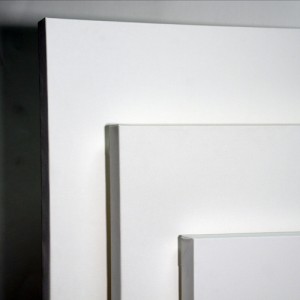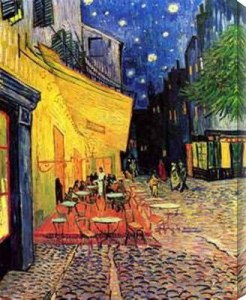Primer: Bringing Paint and Canvas Together
Have you ever painted on raw canvas? If you have, you know that it’s a bit of a challenge. Though it can provide an interesting experience and a unique aesthetic end-result, raw canvas is generally not the best surface to produce lasting art on. For one thing, paint, especially oil paint, will eventually deteriorate the canvas and your work will be ruined. Additionally, the texture of the weave on the canvas will not only show up through most layers of paint, it also gives a rough feel to applying paint to canvas, something many artists dislike.
Because of these reasons, most artists paint on canvases that have gone through a process called priming. Priming is essentially applying a layer of paint-like substance called primer or gesso to raw canvas, which both seals the canvas from damage and smoothes out the surface. Many canvases, such as those we produce, come pre-primed, which allows you the artist to jump straight into painting. However, primer is an extremely interesting material with a long history, and it’s a good idea for artists of all levels to be at least somewhat familiar with it.

Traditional Gesso
Primer is most commonly referred to by its classic name, gesso. Traditional gesso is a type of paint made from chalk, pigment and a binding agent made from animal skin. The animal skin glue seals the canvas fibers and provides an agent for the chalk and pigment to be suspended in. The chalk is used to provide a thick texture to smooth out the surface, while the pigment, usually white or off white, gives the canvas a completely blank and uniform color from which the artist can begin to paint. This kind of gesso has been in use for hundreds of years, and accepts almost any kind of paint, but is more difficult to create and use than modern gesso.
Modern or Acrylic Gesso
Modern gesso is known as acrylic gesso, and technically it is not gesso at all. Its formula is much more chemically complicated, including pigment (again, usually white), a medium latex acrylic polymer mixed with calcium carbonate and a variety of other chemicals used to provide long-life and flexibility, such as ammonia. This kind of gesso is often produced in large premixed amounts by art suppliers and can be bought in stores by artists, eliminating the need for artists to go through the lengthy mixing process themselves.
While most experts will tell you that acrylic gesso works well with any kind of paint, oil paint can eventually de-bind from acrylic gesso, peeling off in a process known as delamination. Though this often takes decades, it’s a good idea for artists wanting to create a long-lasting oil painting to use traditional gesso, which was created and formulated specifically to work well with oil paints. In fact, most professional artists working in oil avoid acrylic gesso, as nothing’s worse than creating a masterpiece that slowly falls apart.

The Future of Gesso
Like many other areas of art supply manufacturing, gesso production is constantly being updated and refined through modern processes. For instance, in recent years scientists have created a soy-based gesso that utilizes a soy-vegetable oil acrylic and what is known as soy ester along with new technological processes to create a gesso that is considered somewhat better to use with oil paints than acrylic gesso. Acrylic gesso itself is a relatively contemporary invention, and it will be very interesting to see what new types of gesso technology is able to create in the next few years. More than likely, we’ll see gessos that are even better sealing, bonding and smoothing in a very short time.
Gesso is a fundamental part of art creation, and a truly remarkable substance. Though, as we mentioned, it is often pre-applied to canvas that you purchase from quality canvas-makers, such as CanvasLot, it’s always a good idea to know more about the materials one uses as an artist. Now that you know a bit about what gesso/primer actually is, you’re ready to learn how it’s used and applied! Stay tuned to this blog for an in depth look at how experts, such as the folk who produce our canvases, utilize this fascinating material to create the most excellent painting surfaces available.